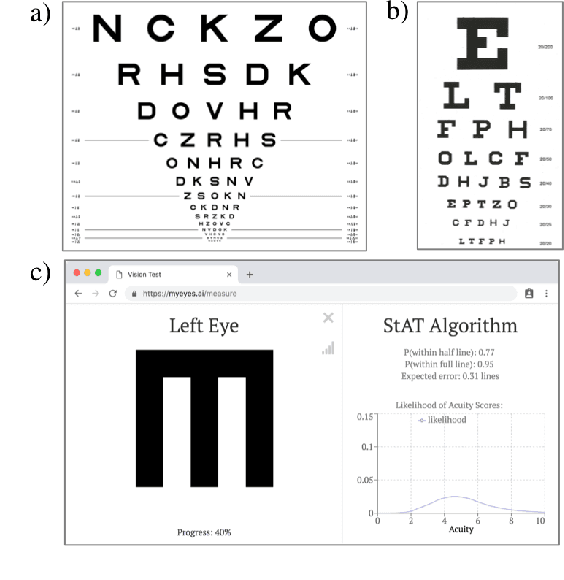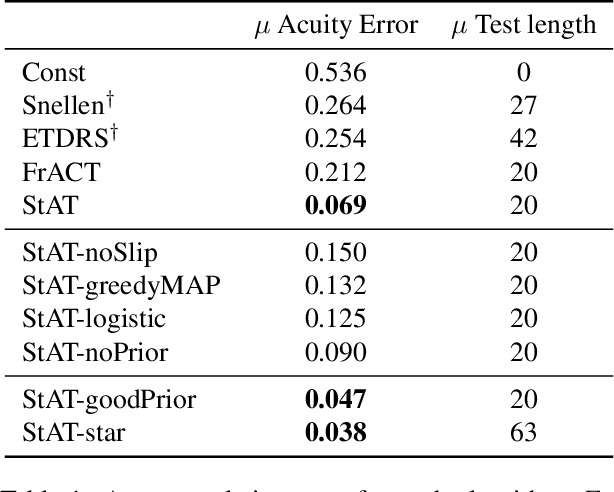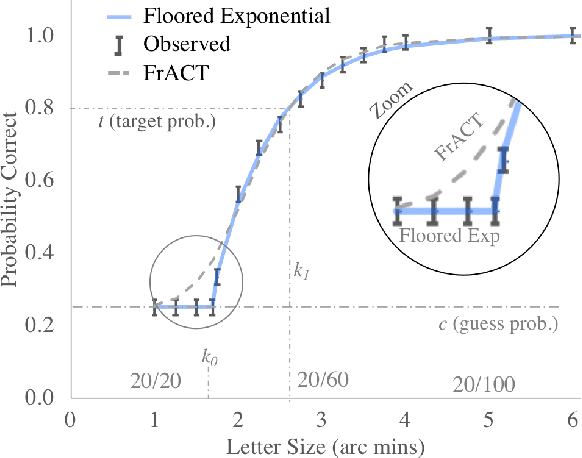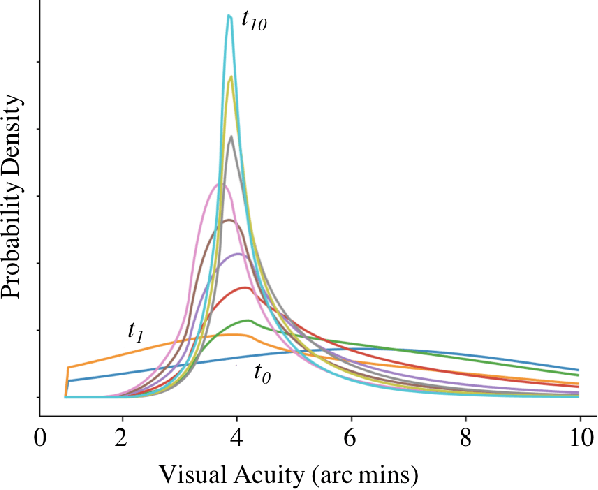The Stanford Acuity Test: A Probabilistic Approach for Precise Visual Acuity Testing
Paper and Code
Jun 05, 2019



Chart-based visual acuity measurements are used by billions of people to diagnose and guide treatment of vision impairment. However, the ubiquitous eye exam has no mechanism for reasoning about uncertainty and as such, suffers from a well-documented reproducibility problem. In this paper we uncover a new parametric probabilistic model of visual acuity response based on measurements of patients with eye disease. We present a state of the art eye exam which (1) reduces acuity exam error by 75\% without increasing exam length, (2) knows how confident it should be, (3) can trace predictions over time and incorporate prior beliefs and (4) provides insight for educational Item Response Theory. For patients with more serious eye disease, the novel ability to finely measure acuity from home could be a crucial part in early diagnosis. We provide a web implementation of our algorithm for anyone in the world to use.
 Add to Chrome
Add to Chrome Add to Firefox
Add to Firefox Add to Edge
Add to Edge